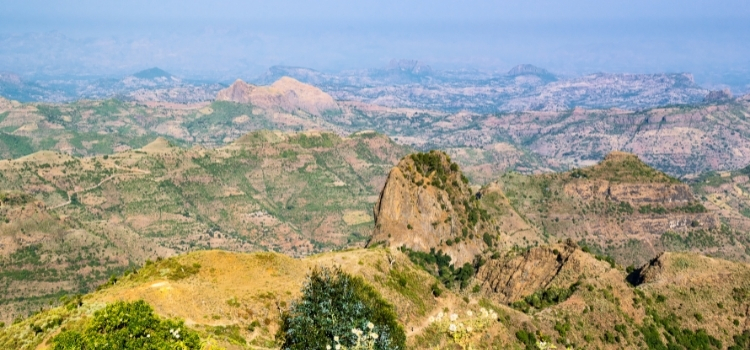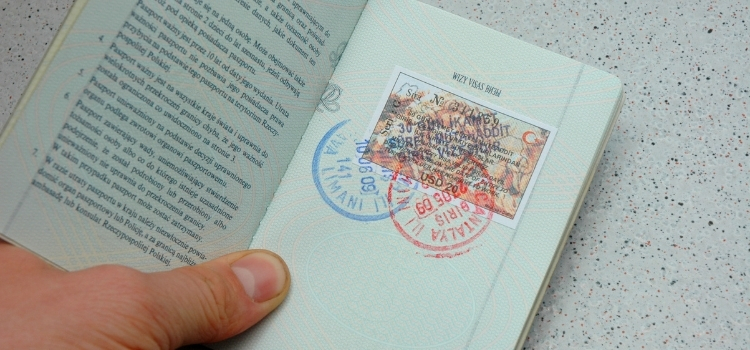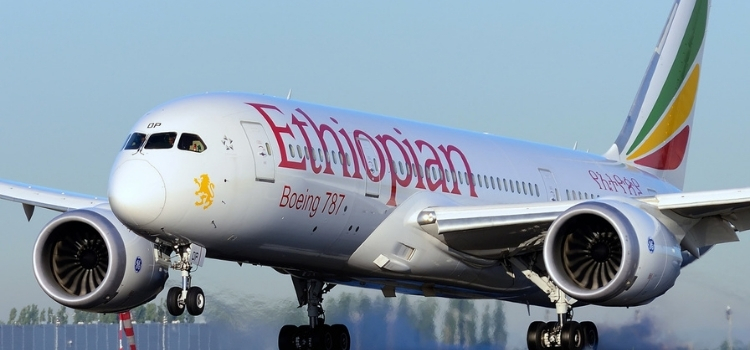TRAVEL INFORMATIONS - ETHIOPIA

TOPOGRAPHY & CLIMATE
Ethiopia has an elevated plateau ranging in height between 2,000 to 3000 meters. In the north and south east part of the country there are high mountains whose picks rise to above 4,300 M. one of the biggest lake which is the source of famous Nile river is also found in the northern part of the country. Ethiopia also has two major favorable seasons which is categorized as wet and dry seasons. The rainy season normally starts mid-June and it will continue until early October but sometimes this pattern may change from the Rift Valley area (starting and ending a few weeks earlier than in the highlands) to the Omo Valley (concentrating the rainy season in March, April and May).
It is advisable to check the average temperatures of the region when you plan to visit due to this geographical variation. For example, on a trip to Southern Ethiopia temperatures are low and warm clothing is essential. In contrast, a trip to the North and the Danakil Depression, you can easily experience daytime temperatures above 50ºC (122ºF).
The Ethiopian climate is actually quite pleasant for tourism due to the altitude. Thus, on the historic North route situated in the Ethiopian highlands, temperatures vary on average of 15ºC (59ºF) and 27ºC (80ºF). On the other hand, in some southern areas of Ethiopia its warmer on average with temperatures reaching up to 32ºC (90ºF).

HEALTH REQUIRNMENTS
A yellow fever vaccination certificate is not required to enter Ethiopia unless you are coming from an endemic area. However, please note that Ethiopia is listed in the endemic zone for yellow fever so travellers arriving from non-endemic areas are recommended to get the vaccine. It is also advisable to be immunised for Hepatitis A and B, Typhoid and Polio.
Malaria is a health issue for many Ethiopians, especially for those living in lowland areas. However, Malaria is not a problem in highlands (above 1,600 meters above sea level), including Addis Ababa, Lalibela, Axum, Mekele, Gondar and Harar. Some popular destinations such as Awassa, Bahir Dar and Lake Tana’s surroundings can pose a risk for Malaria especially at the end of the rainy season (October-November). Consequently, it is highly advisable to bring mosquito repellent and discuss anti-malarial tablets with your health professional before you travel.
It is highly recommended to purchase health insurance for the duration of your stay in Ethiopia. In addition, a first aid pack is essential and it should include: antihistamine, antiseptic cream for insect bites, plasters, high SPF sunscreen, anti-diarrhea medication and oral rehydration salts in case of severe dehydration. It is also advisable to have sun scream to protect your skin get sunburnt because UV strength across Ethiopia is high.

VISA REQUIREMNTS
Tourist visas (for one or three months, single entry) are available in the following link. Please note there are other websites that are not official and may charge extra fee for issuing tourist visas to Ethiopia.
Electronic visas are available for tourists from most of European countries as well as the USA, Canada, Mexico, Brazil, Argentina, Australia, New Zealand, South Africa, Kenya, Japan, Korea, India, China and Russia.
Applications can be made online at www.evisa.gov.et. Please note the following is required:
It is also possible to obtain a business visa of up to three months validity upon arrival with the prior arrangements made by the sponsoring organization in Ethiopia. The visa extension fees are currently $100 for a one month extension (first time), $150 for a fifteen days extension (second time) and $200 for a 10 days extension (third time).
If the traveller’s visa expires before the departure, they will be required to obtain a visa extension at the Immigration Office in Addis Ababa. There is an overstay penalty fee of $5 a day from one to fifteen days and $10 a day after fifteen days. In such cases, the traveler may also be required to pay a penalty of up to 4,000 ETB ($100) before being allowed to leave Ethiopia.

INTERNAL FLIGHTS
When travelling to Ethiopia, it is important to know that domestic fares are considerably reduced (by more than 50%) if your international ticket to travel to the country has been purchased with Ethiopian Airlines. Please be aware that Ethiopian Airlines, as the only domestic carrier, requires the ticket number in order to make the discount for any domestic flights. For further information please click here ( Ethiopian Airlines )
BEST TIME TO TRAVEL TO ETHIOPIA
The best time to travel to Ethiopia is during the dry season (mid-October to May). Depending on your budget, you may prefer to visit Ethiopia during the low season (June to September). Outside of peak season there are still plenty of things to do and enjoy, including some widely known and unique religious festivals such as Timket or Meskel festivals. But more specifically in terms of seasons and destination, we suggest you make plan as follow: -
North:
If you are planning to visit the northern highlands of Ethiopia, the best time is October to March although it does not rain very heavily during the rainy season.
South:
If you are planning to visit the southern tribes in the Omo Valley region of South Western Ethiopia, the best time to visit is from August to October.
Danakil Depression:
If you are planning to visit the Danakil Depression the best time to visit is from November to early January. As Ethiopia is such a large country, encompassing many diverse regions, environments and climates, there is always something to do at whichever time of year you chose to travel. If you have any specific questions regarding any of our itineraries or best times to travel, please contact us and we’d be happy to advise on destination suited to the time of year.

MONEY EXCHANGE
Ethiopian Birr (ETB) is the local currency and it is available in denominations of 5, 10, 50, 100 and 200 notes. It is easy to exchange US dollars or euros into ETB at the airport or any Ethiopian bank upon arrival. Nevertheless, note that Ethiopian banks will ask you for a receipt proving your foreign currency exchange in case you want to change ETB back to your foreign currency before leaving. Bank opening hours are usually from 8am to 5pm (Monday to Saturday).
Credit cards are not commonly accepted for payments apart from hotels, but you can use ATM machines in Addis Ababa. ATMs are also becoming common in other main cities too. Please check the transaction fees of your bank before using an ATM and note that 10,000 ETB is normally the maximum amount that can be withdrawn per day with multiple withdrawals.
TELEPHONE AND INTERNET ACCESS
EthioTelecom is the only telecommunication operator in Ethiopia. It is easy to buy a SIM card by providing a photocopy of your passport and paying a 30 ETB fee at any branch of the EthioTelecom in Addis Ababa. Wi-Fi Internet access is available in most hotels of the capital. However, it is more difficult to find wireless connections in smaller cities. The country Dialing Code is +251.
CUSTOM :
Duty-free imports are permitted for up to :
